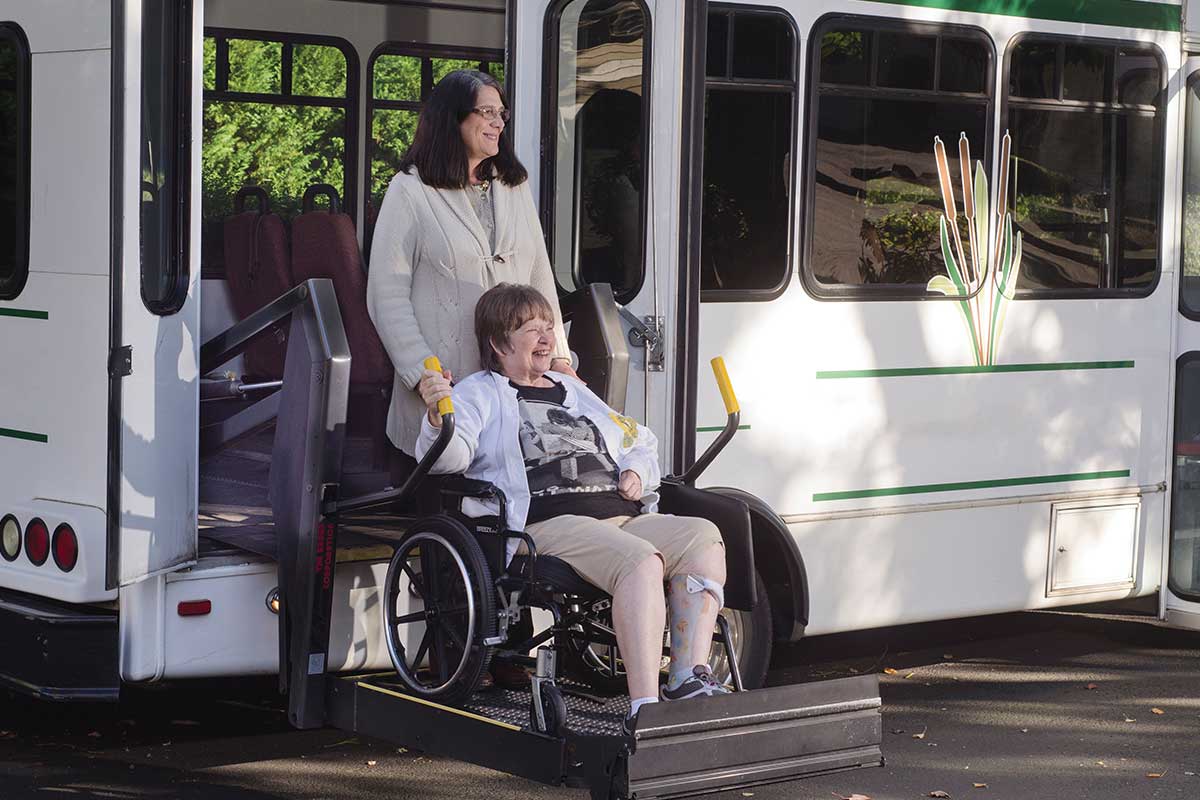A missed exit, a wrong turn, a scraped curb during parallel parking — these things happen to everyone. But at a certain point in many lives, the mistakes get bigger and more consequential, and we must deal with a difficult, fraught question: Is it safe for our aging parents to continue driving?
The process of getting a driver’s license involves concrete dates, rules, and procedures: a minimum age, driver’s ed, and road and written tests. Getting out from behind the wheel isn’t like that, says Dr. Angela Hsu, physician director for memory care services at Kaiser Permanente.
“There’s no test that a doctor is going to do in the office that’s going to say you can’t drive per se, unless it’s really egregious,” says Hsu, a geriatrician who practices in McLean. Elin Schold Davis, the coordinator for the Older Driver Initiative at the American Occupational Therapy Association, says, “The issue for driving is not about your birthday. It’s not about your age.”
The good news is there’s a lot that can be done to keep older drivers on the road safely. But it’s a conversation that families need to have, and like most questions regarding aging, it’s best to talk it through sooner than seems necessary. In Virginia, drivers over age 75 have to renew their licenses in person and pass a vision screening.
The Gut-Check Question
Hsu calls driving “the most dangerous thing any of us do in our daily lives, whether you’re older or not.” And while figures from AARP show that older drivers are safer drivers on average — safety problems basically decrease consistently with age — the percentage of drivers who die in crashes rises after age 65, most likely because older drivers are more frail.
The gut-check question, both Hsu and Schold Davis say, is simple: Would you feel comfortable letting your older parent drive your child around? If you’re not sure, it’s time to take a look at your parent’s abilities.
New dents on a car or a recent slew of tickets may be signs of erratic driving, they both say, but the only reliable way to check on a parent’s driving is to sit in the passenger seat. When you go out together, let Mom or Dad drive.
Hsu says to make sure you do this more than once. Anyone can take a wrong turn, but Schold Davis says it’s how a driver responds to mistakes that’s important. “It’s the memory problem and the panic and the lack of being able to figure out a solution.”
She adds that her organization, as well as the Centers for Disease Control and Prevention, the National Highway Transportation Administration, and The Hartford insurance company have resources to help you know what to look for. “Don’t sit there like you’ve got a clipboard next to Mom. But when you get home, you can take a look at it.”
A lot of the factors that comprise good driving are physical, and while aging bodies make for more challenges, staying in good shape can really help. Occupational therapists can recommend exercises for drivers and modifications for vehicles. The Virginia Department of Motor Vehicles recommends the GrandDriver program, which has resources that include testing centers and transportation providers, and the organization Carfit, which can recommend modifications.
Advances in auto safety technology — even just in the past few years — have made a big difference. Blind spot detectors, rear view cameras, even trackers “are all ways to help us feel safer and protect each other when we’re on the road,” Hsu says.

Transportation Planning
The same kind of thought and foresight that we put into retirement or estate planning should go into transportation planning, Schold Davis says, and it should start in middle age.
Your parents should become familiar with the public transportation options in their area, Schold Davis says (and you should know at least one non-car way to get to work yourself). If your parents are considering a move, those options should factor into their thinking. “The issue is more about needing to be able to go where we want to go, than the car itself.”
There are plenty of ways to let Mom or Dad ease up on driving as well. Schold Davis recommends holding family gatherings at lunchtime because many people drive better in the daytime. And if you do host a nighttime gathering, pick up your parents or let your children pick them up, if they drive. That’s a great opportunity for bonding, she adds.
Schold Davis says you need to let your parents feel safe when they say they don’t feel up to driving. That’s the point where you should take them to their appointments or arrange for them to get a cab or rideshare.
It’s important for you and your parents to stay in contact with their doctors, Schold Davis says. If there’s a problem, “The correction might be a modification to the cardiac medication,” she says. “The correction is not necessarily not driving, and we need to get away from being afraid to reveal ‘I had a near miss, and it scared me.’”
She says expressing concerns with the doctor by asking questions, such as “Mom wants to keep driving. Is there anything we can focus on, anything we can do?” goes a long way. The doctor “may talk about the importance of going to exercise [or] anything we need to focus on,” she says.

Major Red Flags
Schold Davis says these recommendations hold for signs of normal aging. “As we get older, we collect diagnoses,” and she says some are major red flags for driving, including dementia, Parkinson’s disease, and multiple sclerosis. “[They] are nasty when it comes to driving.”
But even when the situation calls for more action, she says, your parents’ ability to assess their own abilities is critical, and they need to feel safe.
The American Occupational Therapy Association provides a contract on its website whereby you promise to do everything you can to help your parents safely stay behind the wheel. In return, the parents agree to do whatever they can to stay in shape to drive and to accept when you and the doctor decide it’s time to stop.
“You’re not taking away driving. You are protecting them from access to hurting themselves and others,” she says.
Schold Davis recalls a client who had failed three evaluations, continued to drive, and fought with his wife about it. “After we sat down and really talked about her role in loving her husband,” Schold Davis says, “the next day she sold the car, and once the trigger was gone … the fights stopped. Because the context got changed.”
In all cases, Schold Davis adds, the key is providing support, and thinking hard about what’s truly supportive. “We’re not being positive and supportive by ignoring. We have to help people drive as long as they can. When it’s not a good idea, we need to help them not. And that’s loving on both sides.”
This story originally ran in our July issue. For more stories like this, subscribe to Northern Virginia Magazine.





